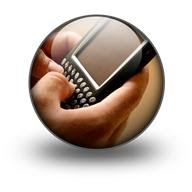Do you tweet
your thoughts on Twitter and update your status on Facebook? Are you uploading photos and videos and other images to social media platforms like Flickr or YouTube or Pinterest?
Do you write
on a computer, tablet, phone, or other electronic device?
 Are you
saving articles to Google Reader or creating documents to share with your
colleagues on Google Docs?
Are you
saving articles to Google Reader or creating documents to share with your
colleagues on Google Docs?
Are you
contemplating starting a blog?
All of these
electronic or digital possibilities are connected to 21st century literacies.
How do these
electronic devices, tools, applications and other digital options change the
way we write and think about writing? How is the teaching of writing changed?
Along with several teachers from the Columbus Area Writing Project, I am currently involved in a class with Troy Hicks focusing on teacher leadership in digital writing. In our class we are asking these questions and more.
Along with several teachers from the Columbus Area Writing Project, I am currently involved in a class with Troy Hicks focusing on teacher leadership in digital writing. In our class we are asking these questions and more.
Together, we
are wrestling with defining digital writing, determining appropriate and
necessary instruction for K-12 students, and also creating effective
professional development frameworks for teachers.
As this class progresses, we are reading theory and research, articles and books, as well as accessing additional resources shared by our members.
As this class progresses, we are reading theory and research, articles and books, as well as accessing additional resources shared by our members.
We are
participating in ongoing written conversations online at Google Communities and
face-to-face conversations using Google Hangout. In
response to our work together, we are sharing documents we have created collaboratively,
and those we have created individually to use in our varied teaching situations.
What are the
advantages of our rapidly growing options with the Internet, digital devices,
software, tools and applications? Many
teachers and scientists cite high levels of distraction and shorter attention
spans as down sides. (Click to read more about multitasking, attention and distraction. Click to read Kids and Multitasking)
Others cite
new possibilities for collaboration, interactivity, immediate access to
information and feedback, as well as expanded options in design and development
as definite advantages. Click to read more about these advantages in Why Teach Digital Writing?)
Cyberspace
has become the new frontier—as we strive to go where no man--and no pen and
paper-- have gone before, there are several issues to consider.
First,
technology, with its new devices, gadgets, software, applications and the like,
allow us to work faster, more efficiently, and more professionally.
The new
technologies also allow us work with amazing levels of cooperation,
collaboration and expanded participation.
This brings
people together who would never have worked together, shared ideas or even encountered
each other in the past.
Implications
and impact for education are huge. What will the future classrooms look
like? Will there even be classrooms
where people gather in one spot at one time to learn?
Social actions
are forever changed, as well. Recent
disaster aid efforts have been managed online through social media. And political uprisings and revolutions have
also advanced using these same platforms.
Whether we
like this new digital world or not—our children are growing up as citizens of a
rapidly changing electronic/digital world.
New
technology and tools have involved more people in more conversations about more
topics and issues than were ever possible, with speeds unimagined in the past
How do we balance the use of these new tools in our lives?.
Where will these new possibilities lead us?
How do we balance the use of these new tools in our lives?.
Where will these new possibilities lead us?
What digital tools do you use in your everyday
life?
How do these
change the way you approach writing and reading?
Have your experiences been positive or negative? How so?
Have your experiences been positive or negative? How so?
What changes
would you like to see in the way we work and read and write?
Write a personal essay or other writing form about
your experiences with new technologies, digital writing and the impact on your life, and the larger world
community.


No comments:
Post a Comment